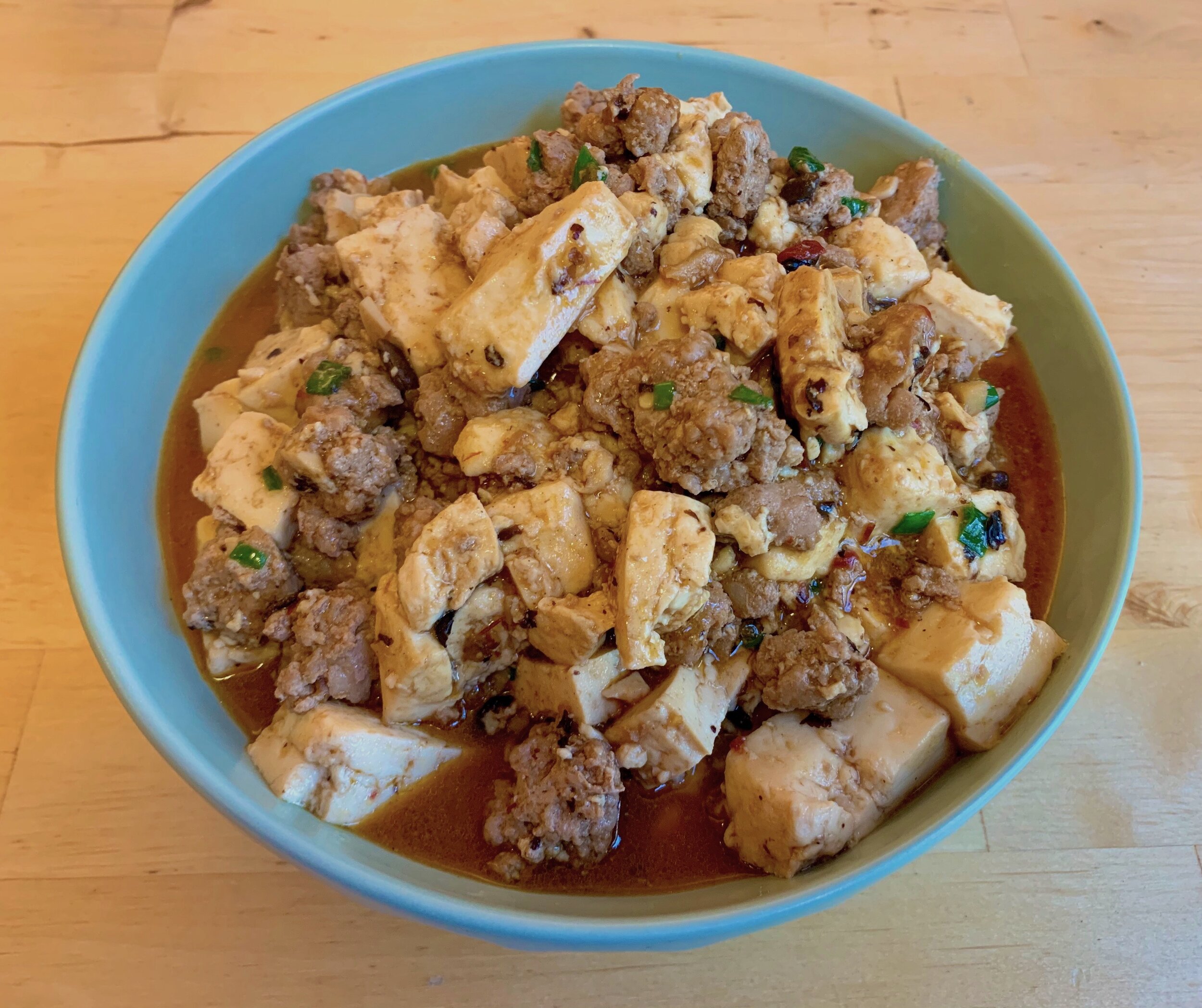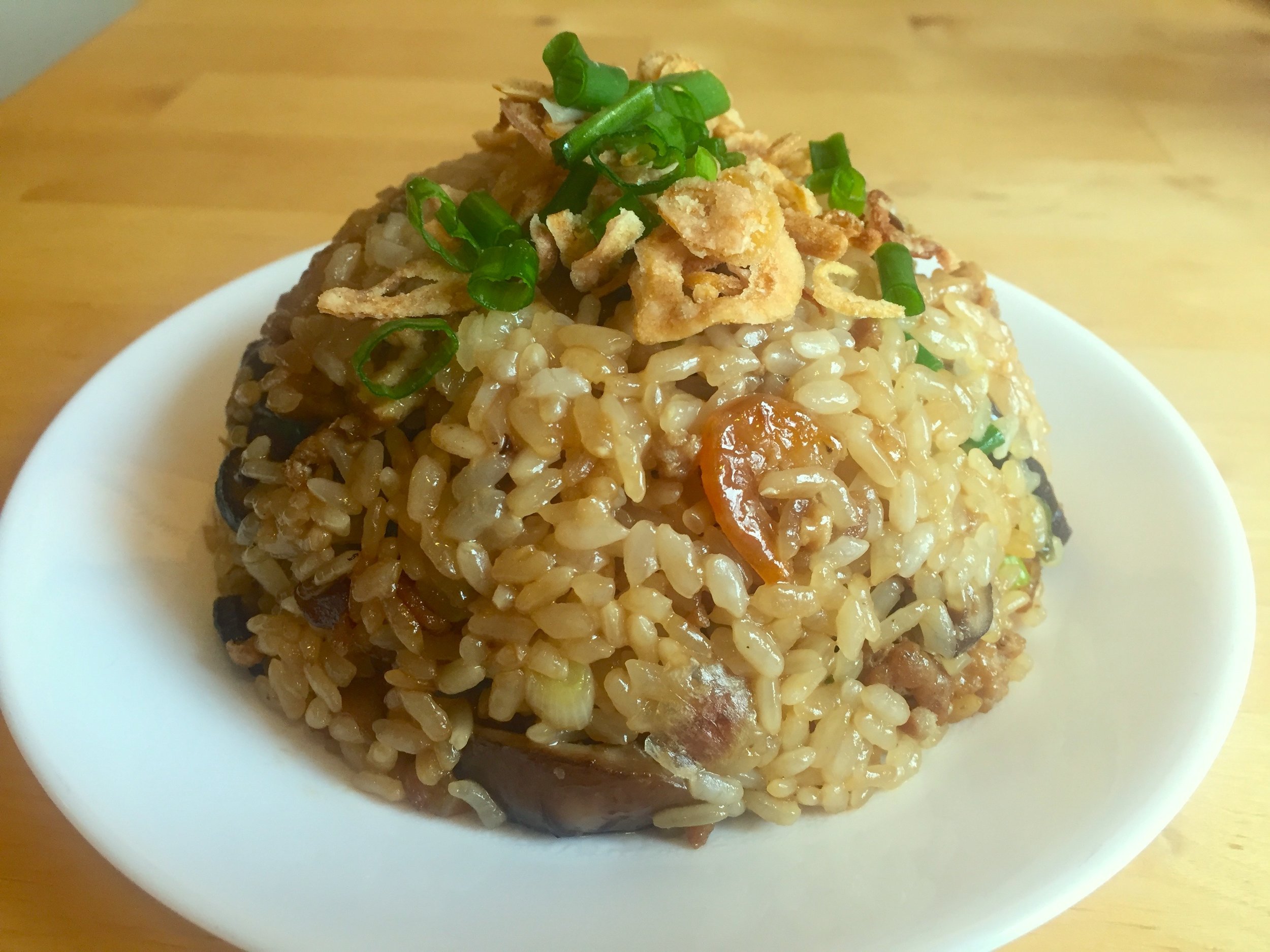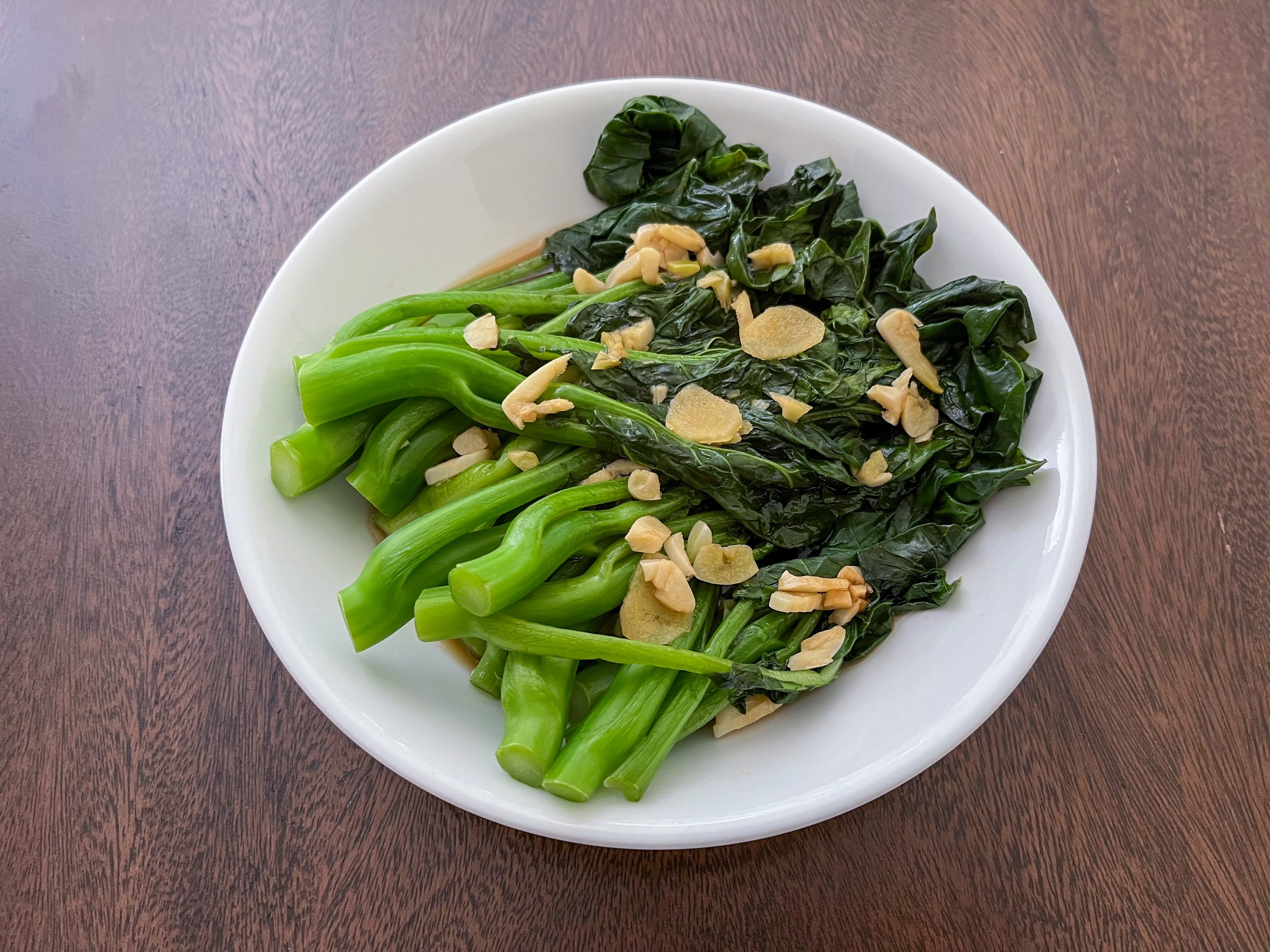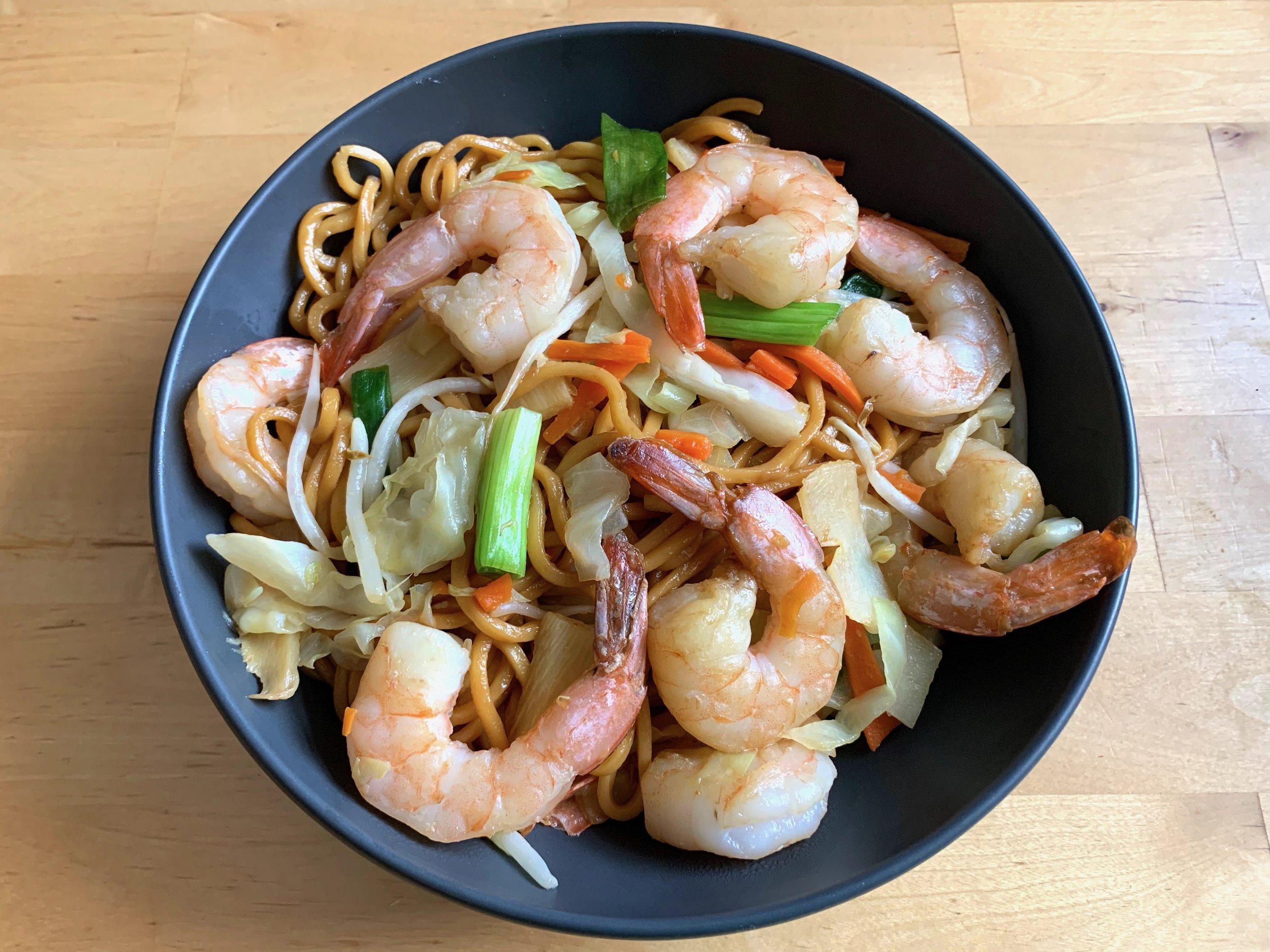Napa Cabbage with Dried Shrimp
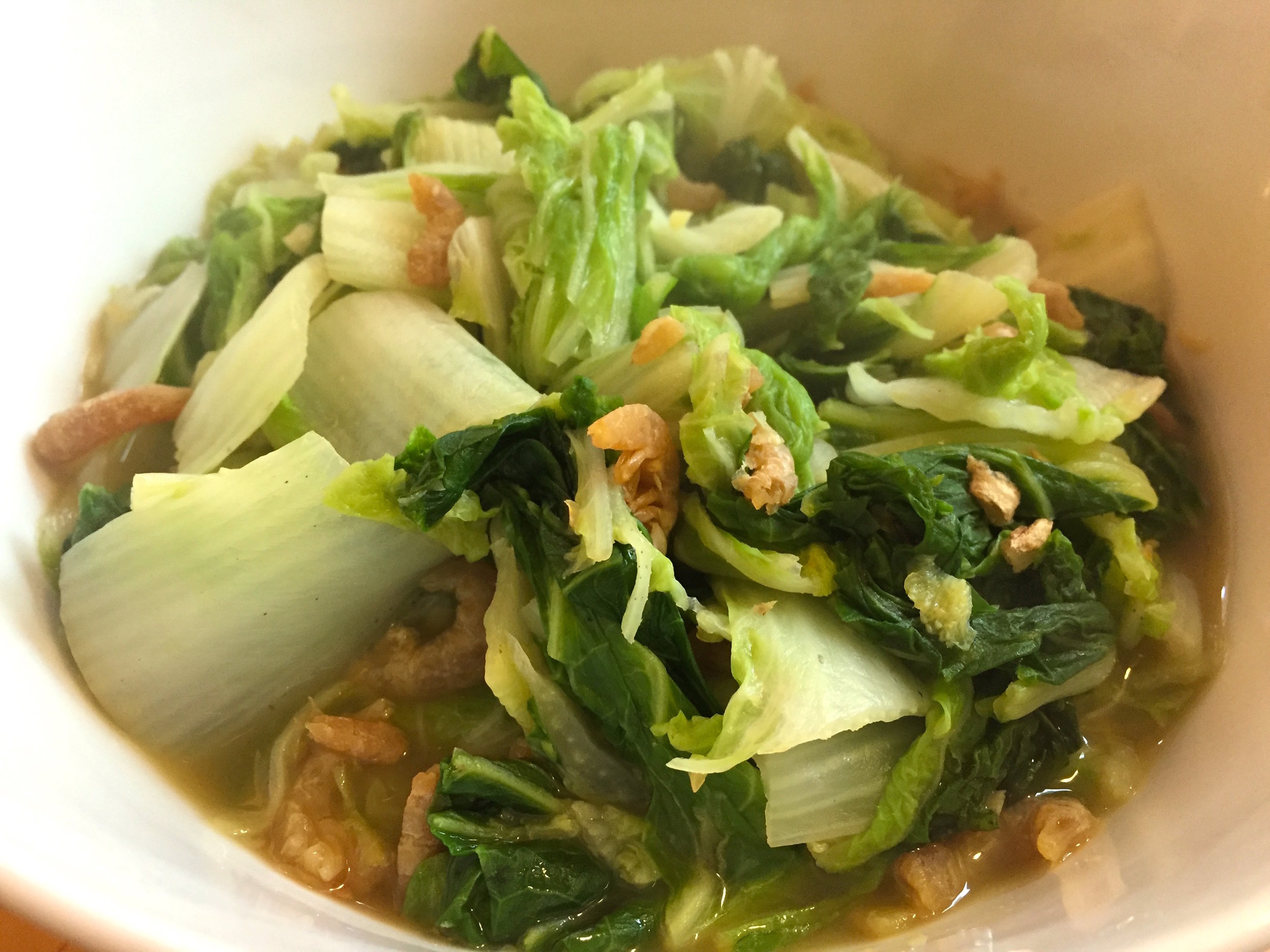
開陽百菜 (Kai Yang Bai Cai)
Napa cabbage is another member of the ubiquitous family Brassicaceae, first domesticated in the Yangtze River Valley. The vegetable spread to Korea and Japan, before arriving in America with Chinese and Japanese immigrants in the late 1800s.[1] Napa cabbage is a staple of East Asian cuisine and a symbol of prosperity, sometimes depicted in carvings and jade. This preparation of napa cabbage is a straightforward dish common in Taiwan, flavoring the mild vegetable with garlic, ginger, and shrimp.
Ingredients
1 small napa cabbage
2 tbsp dried shrimp
4 cloves garlic, minced
½ inch ginger, minced
1 tsp cornstarch
½ chicken stock
1 tsp vegetable oil
salt to taste
Dried shrimp are a common ingredient in many Asian cuisines, where they are used primarily as a seasoning, rather than a protein source.[2,3] They can be found at most East Asian supermarkets, and have a long shelf life if kept dry. Small shrimp are salted and sun-dried, resulting in a final product usually about a cm in size. These dried shrimp have an intensely savory flavor, both salty and fishy. Their flavor can be an acquired taste, and for this dish you can decide whether you should adjust the amount of dried shrimp to your taste. Before use in this recipe, soak briefly and rinse the shrimp several times in cold water, to soften them and to remove excess salt.
Meanwhile, wash the napa cabbage, and chop it into 1 inch pieces. Similar in structure to romaine lettuce, the outer leaves of a napa cabbage are generally tougher and more bitter than the inner leaves. Cabbages bought at a supermarket will generally have their outer leaves removed, leaving a paler looking white head. Fresher napa cabbages, like those generally found at farmer’s markets, will have their green outer leaves intact. If the outer leaves look too beat-up, remove them before cooking.
Mince the garlic and ginger, and heat a teaspoon of vegetable oil in a pan with a lid. Once the oil is hot, add the minced garlic, minced ginger, and drained shrimp. Fry until fragrant, approximately 30 seconds to a minute. Then add the cabbage to the pan, together with half a cup of chicken stock, and cover.
Cook, covered, until the cabbage becomes tender, approximately 8 minutes. When compared to other members of the cabbage family, napa cabbage is fairly insensitive to overcooking, so the final texture has more to do with your personal preferences than with avoiding unsavory flavors.
While the cabbage cooks, prepare a cornstarch slurry to thicken the stock. Mix the cornstarch with a small amount of cold water, then pour the slurry into the pan and stir. Continue cooking for a minute or two to allow the stock to thicken slightly. Then remove from the heat and salt to taste.
Substitutions
Mushrooms—particularly shiitake mushrooms—work well in this dish. If you want to add mushrooms, slice them and add them to the pan together with the cabbage.
Bonito flakes have a somewhat similar flavor profile to dried shrimp, and can be substituted for them in this dish.
[1] Napa cabbage bears no relation to California’s Napa Valley. Rather, the name is an Anglicization of the Japanese word “nappa” (菜っ葉), which means vegetable leaves.
[2] Dried shrimp are known as xia mi (蝦米), which translates literally to “shrimp grains of rice,” an indicator of their size.
[3] Dried shrimp are also used occasionally outside of Asian cuisines, specifically they are often found in Cajun recipes.
Recipe
Prep Time: 5 min Cook Time: 10 min Total Time: 15 min
Difficulty: 1/5
Heat Sources: 1 burner
Equipment: pan
Servings: 4
Ingredients
1 small napa cabbage
2 tbsp dried shrimp
4 cloves garlic, minced
½ inch ginger, minced
1 tsp cornstarch
½ chicken stock
1 tsp vegetable oil
salt to taste
Instructions
1. Wash the dried shrimp in water, rinsing three times to remove excess salt.
2. Heat the oil in a pan over medium-high heat. Add the minced garlic, ginger, and dried shrimp and fry until fragrant, approximately 30 seconds.
3. Add the chopped napa cabbage to the pan, along with the chicken stock, and cover the pan, cooking until the cabbage is tender, approximately 8 minutes.
4. Prepare a cornstarch slurry by mixing the cornstarch with a small amount of cold water. Add the slurry to the pan and stir.
5. Continue cooking for 1-2 minutes to let the stock thicken slightly, salt to taste, and serve.





